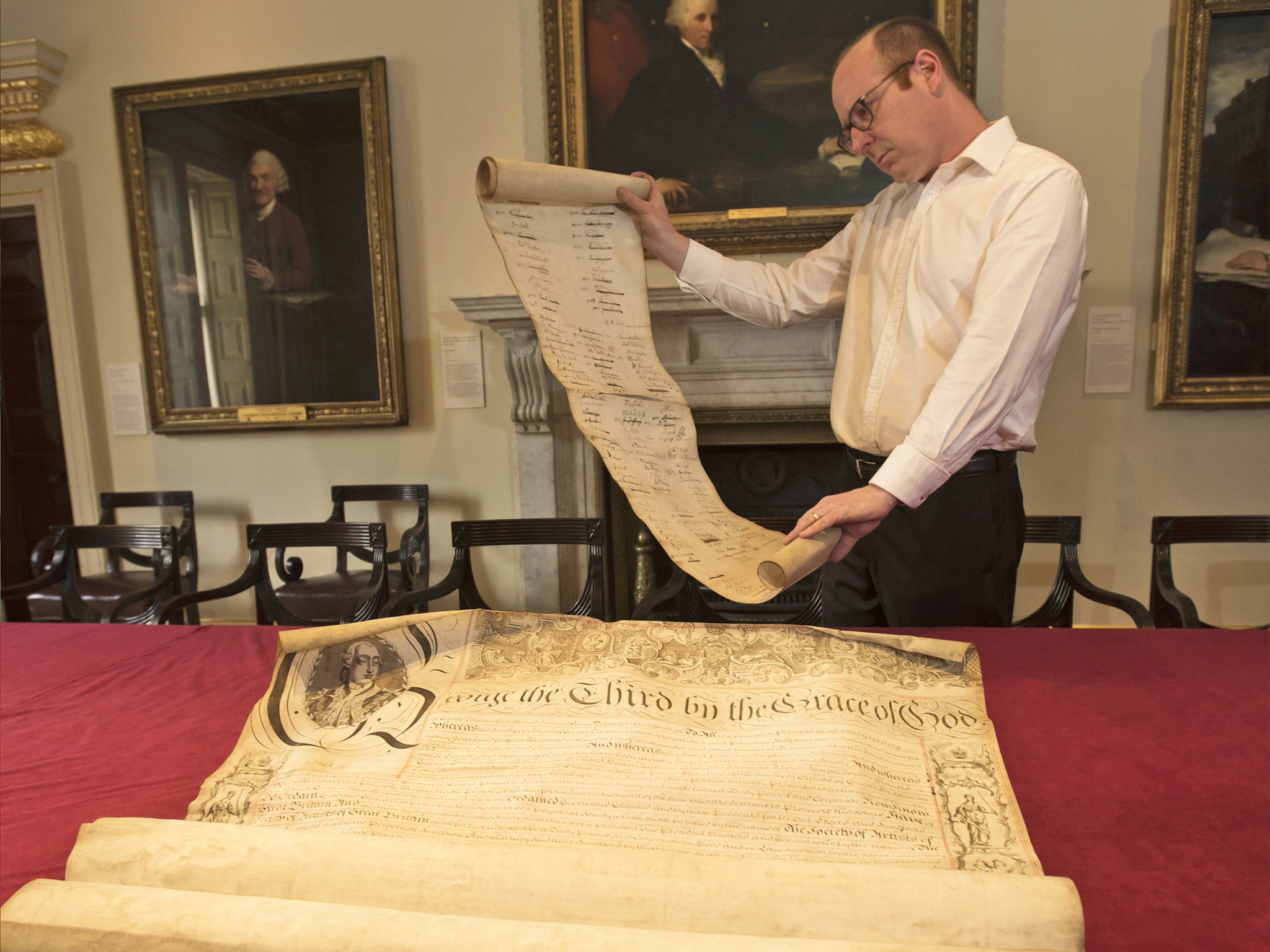Royal Academy of Arts: Lost record of bitter 18th-century feud discovered in basement
A forerunner of the RA died out when many of its most respected members, including the RA's first president, defected

As one of the most celebrated portrait artists of his day, Joshua Reynolds was a fitting choice to be the first president of the prestigious Royal Academy of Arts. The only problem was, Reynolds had to abandon many of his fellow painters to join – sparking an 18th-century feud with a venom historians are only now beginning to appreciate.
The row has come to light thanks to the chance discovery of a document in the basement of the RA that for a century had been thought lost.
Dating back to 1765, this was the Roll of Obligation of the Society of Artists – a forerunner of the RA that slowly died out when many of its most respected members, including Reynolds, defected.
The vellum roll has the names of 112 members of the Society, which had started in 1760 as a loose association of artists, and became a legally binding and professional organisation by King George III’s granting of a Royal Charter five years later.
“The trouble was they argued amongst themselves terrifically about all the procedures and how it was to be managed,” said Charles Saumarez Smith, secretary and chief executive of the RA.
When the architect William Chambers lost a power struggle with fellow building designer James Paine in 1768, he led a cabal of four artists to the King to set up a rival organisation with its own royal charter. The king agreed, and in the row that followed many more artists were expelled from the original society while others resigned to follow Chambers.
The rediscovery of the roll give an insight into the strength of feeling this aroused, because every time a Society member quit, one of those left behind “went back with a pen and crossed them out”. Among those to have their name covered up was Thomas Gainsborough, but looking at the document particular anger was clearly aimed at one artist.
“Reynolds is especially heavily crossed out,” said Mr Saumarez Smith. “He had promised not to jump ship but when he was made president of the RA he did. They may have felt especially cross with him.”
“The ones who were left behind were very annoyed,” added Mr Saumarez Smith. “The better artists all wanted to go to the Royal Academy.”
The RA has gone on to be one of the country’s leading artistic institutions, being granted the use of Somerset House – where it remains to this day, and where it is currently hosting the Ai Weiwei exhibition. The society, on the other hand, limped on with its schedule of exhibitions until 1791, calling themselves the Free Society of artists after the split.
The last living member of the society bequeathed its archive in 1836, including the Royal Charter and the roll. The RA said it “appears they were misplaced in secure storage”. The archivist had only known of their existence because of a reference in a book dated 1918.
It was only found again earlier this year in a cache of papers labelled “artists’ memorabilia” in the RA’s sculpture store in the basement of its Burlington Gardens base, which was being cleared out ahead of major renovation works.
Mr Saumarez Smith said it was “momentous and important”, and “a vivid reminder of the feuds and controversies which led to the founding of the Royal Academy”.
Subscribe to Independent Premium to bookmark this article
Want to bookmark your favourite articles and stories to read or reference later? Start your Independent Premium subscription today.

Join our commenting forum
Join thought-provoking conversations, follow other Independent readers and see their replies